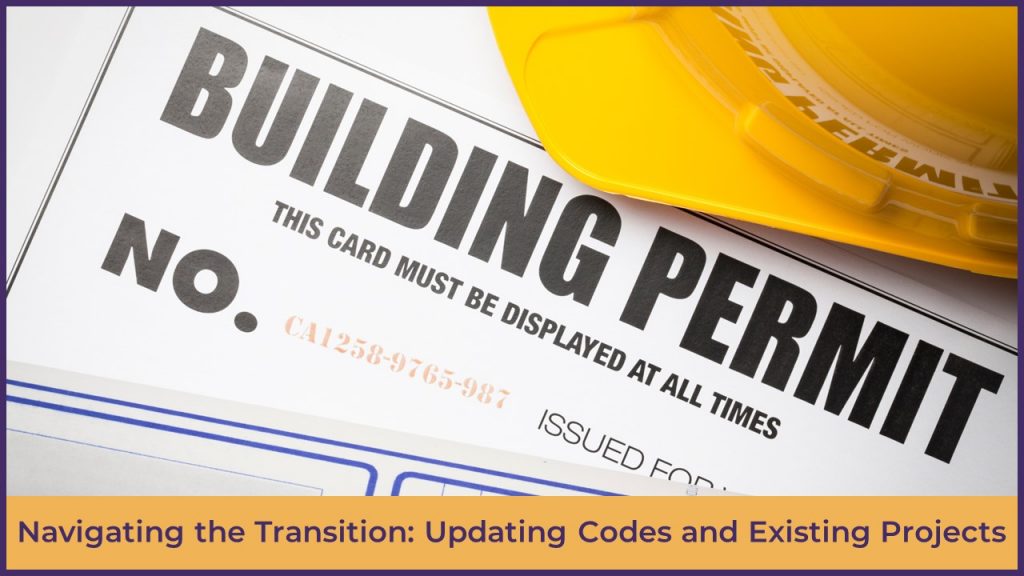
Building codes, the essential regulations ensuring safety in the built environment, are designed to change with advancements in technology and construction. Unfortunately, as a recent article Code Shift by Elsa Lam, April 1, 2024 in Canadian Architect, highghlighted, some outdated codes can hinder critical progress, such as desperately needed efforts to improve affordability and density in our cities. The article focuses on Canada’s particularly outdated fire safety regulation—the requirement for two exits in multi-unit dwellings above two stories. This stringent rule, a legacy from an era of far greater fire risk, has far-reaching consequences. It reduces potential housing density, consumes valuable space, and inflates construction costs. Architects and developers alike express frustration that this outdated regulation directly contributes to the housing affordability crisis.
Outdated Building Codes – A Barrier to Progress: As the article details, countries around the globe allow single-stair access to buildings significantly taller than the Canadian standard. This demonstrates that equally robust fire safety standards can be achieved without the costly second exit requirement. Staircases can consume floor space equivalent to an extra unit, significantly impacting the economic feasibility of smaller multi-unit developments.
The fight to update Canada’s National Building Code is gaining momentum. Architect Conrad Speckert and fire protection engineer David Hine have formally submitted a change request, opening the door to a more efficient future for Canadian housing. While positive change comes slowly in a heavily regulated sector, the potential benefits are worth driving this movement forward.
How Can RForms Contract Administration Solutions Help?
- Streamlining Regulatory Processes: RForms offers a robust platform for digitizing, organizing, and managing construction regulation and code compliance aspects. This eliminates unnecessary delays and errors stemming from manual, paper-based records.
- Accelerating Code Revision and Approval: RForms streamlines review process of updated codes through real-time collaboration, online comment tracking, and electronic approval workflows dramatically reducing the time needed to amend documents.
- Enhancing Accessibility and Transparency: Searchable databases and user-friendly platforms encourage broader involvement and faster review processes.
Benefits of Code Modernization and RForms: Updating restrictive building codes unlocks the potential for several key benefits:
- Greater Housing Density and Affordability: Removing the requirement for secondary exits frees up valuable space for additional housing units. This directly contributes to density and affordability in areas desperately needing more options.
- Design Flexibility and Innovation: Architects and designers will be empowered with greater flexibility. This freedom unlocks a new range of housing types and creative configurations, enriching neighborhoods and improving residents’ quality of life.
- Cost Savings for Developers: Reducing the footprint needed for circulation can lower construction costs, making smaller projects like multi-unit dwellings more economically viable for developers.
Navigating the Transition: Updating Codes and Existing Projects: While exciting for future projects, the prospect of updating building codes raises questions about how existing developments under construction or already built might be affected. Here’s a breakdown of potential impacts and how RForms Contract Administration Software can ease the transition:
Challenges for Existing Projects:
- Grandfathering Clauses: Existing buildings might be “grandfathered in” under the old code, meaning they wouldn’t be required to meet the updated standards. This could create inconsistencies and confusion for occupants and future renovations.
- Retrofitting Costs: Upgrading existing buildings to the new code could necessitate costly retrofits, especially if the changes significantly differ from the original construction plans.
RForms as a Navigation Tool:
- Clear Communication and Documentation: RForms facilitates clear communication and transparent documentation of all changes, approvals, and justifications throughout the process. This creates a detailed record for future reference and ensures adherence to the code in effect at the time of construction for grandfathered buildings.
- Change Order Management: If retrofits become necessary, RForms streamlines the management of Change Orders (COs). The platform allows for creating, submitting, tracking, and approving COs electronically, ensuring all stakeholders are kept informed, and delays are minimized.
- Cost Control and Transparency: RForms’ cost tracking features can be used to monitor and manage retrofitting expenses associated with meeting the new code. This promotes transparency and helps project managers stay within budget.
How RForms Manages the Nuts and Bolts: Beyond navigating the transition for existing projects, RForms excels at managing the core administrative tasks crucial for any construction project, especially when dealing with code updates and potential changes:
- Change Orders (COs): RForms simplifies the CO process by providing electronic forms, automated workflows, and real-time status tracking. This ensures all parties involved (architects, engineers, contractors, and owners) are on the same page regarding proposed changes, approvals, and the associated costs.
- Requests for Information (RFIs): RForm’s platform facilitates efficient communication by creating and submitting RFIs. Questions about code interpretations, clarifications, or potential deviations can be documented and addressed quickly, avoiding delays or misunderstandings.
- Submittals and Transmittals: RForms streamlines the submission and tracking of project documents, including shop drawings, product data, and certifications. This ensures all parties have access to the latest approved documents, minimizing the risk of errors due to outdated information.
- Changes and Cash Allowances: When code updates necessitate changes to the original plans, RForms allows for clear documentation of the modifications and associated cost adjustments. This fosters transparency and facilitates fair negotiation of cash allowances to accommodate necessary changes.
Building a Future-Proof Construction Landscape: Modernizing building codes may present initial challenges for existing projects. However, the long-term benefits outweigh these hurdles. RForms Contract Administration Software is a valuable tool for managing the transition, streamlining communication, and ensuring all stakeholders are informed and involved throughout the process. By embracing innovative software solutions and a data-driven approach to regulations, the construction industry can create a future-proof landscape that prioritizes safety, affordability, and design excellence.
RForms – A Catalyst for Modernization: While regulatory change moves slowly, software solutions like RForms can greatly enhance the efficiency of these processes. By streamlining communication, digitizing outdated records, and providing powerful tools for collaboration and code analysis, RForms Contract Administration Software empowers the modernization of the built environment. The future of housing demands intelligent, efficient solutions for addressing the challenges of affordability, density, and safety. RForms technology and a progressive, data-driven approach to building codes offer a path toward a brighter future for the housing sector.
Our most recent RForm Bulletin 24-0303 focuses on the long project timelines that are a significant hurdle in addressing the housing shortage. The relationship between the time it takes to build and the availability of homes is a delicate dance of resources, regulations, and workforce. By exploring the factors that contribute to these extended timelines, from securing permits to the intricacies of resource allocation and scheduling, we aim to shed light on how these challenges contribute to the scarcity of housing and what might be done to mitigate these issues, thus contributing to a solution for the Canadian housing crisis.

